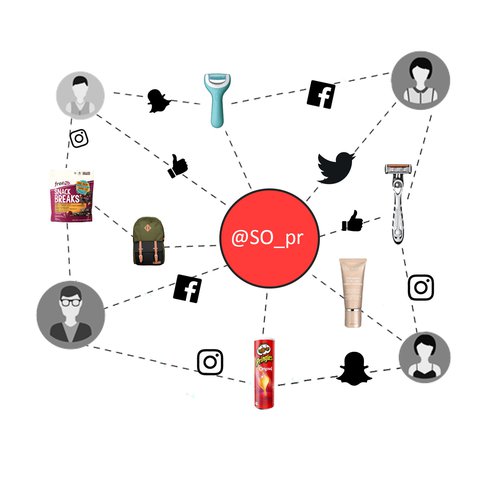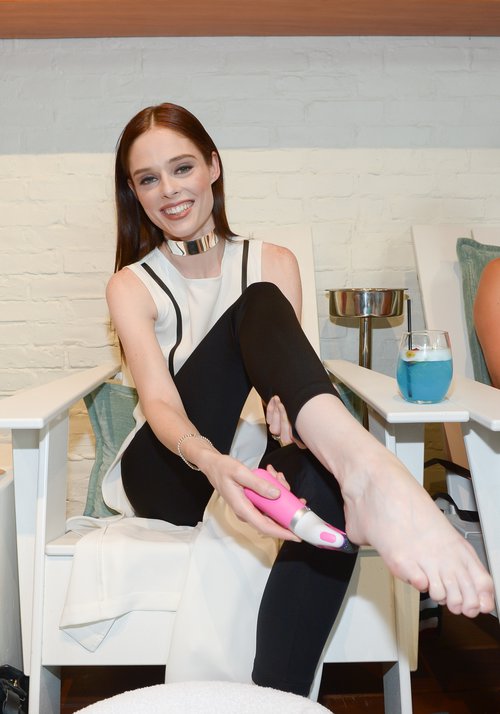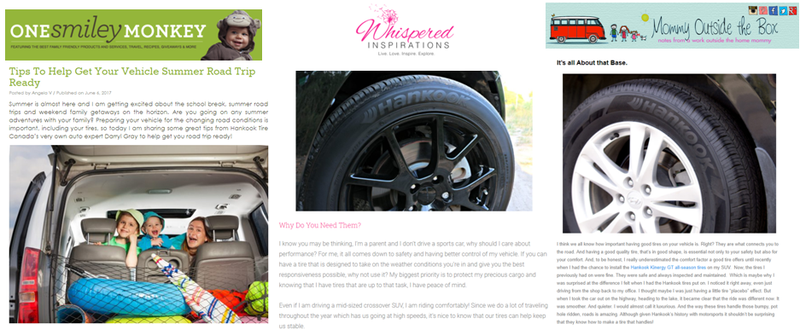In the beginning the practice of PR pivoted on media relations — convincing trusted, credible, (often) hard-nose journalists to positively report on (read endorse) your brand, new product, or particular point of view.

We called this coverage earned media and were, and still are, very grateful to make legit news for our clients in the ever-shrinking, but oh-so-valuable, mainstream media world.
And then came the internet with its plethora of social platforms and an entirely new cadré of trend-spotters, tastemakers, and sources for info consumers want and need to make their daily purchasing, and other important decisions.
The paradigm has shifted in the why, how and where consumers now source information. Reccos from friends, family, and trusted online sources now rank first when it comes to deciding what lipstick to buy, music festival to attend, or charitable cause to support. And that’s why Influencer Marketing — the harnessing of trusted online sources to convince and convert consumers — is picking up steam in the marketing galaxy.
The reasons are obvious, people get social to engage with people — to chat, exchange ideas, entertain, amuse, even outrage. They’re hanging out to commune with humans, NOT to read your salesy ads for new products, or ideologies. Brands that want to cut through the cluttered content marketing landscape must now go the extra mile to be perceived as “human” rather than corporate. Brands that thrive on social create charismatic, relatable personas, and leverage credible, third-party influencers to successfully grab our attention, likes, and comments.
And that’s where key influencers, with their awesome power to persuade audiences come in. Their content is equal parts relatable and aspirational, making it natural for people to feel a special connection with these social thought-leaders. We followers accept info from influencers differently than we do with ads, and accept influencer endorsements as recommendations from a friend, rather than paid advertising — even though that influencer may in fact be compensated.
These days our Influencer Marketing team here at Strategic Objectives keeps very busy managing numerous influencer campaigns for a wide variety of clients — from retail, fashion and beauty, to food and beverage, automotive, health, and financial services.
Our social PR team has learned, through hard-won experience, that high quality influencer content turns information into entertainment, changes minds, and drives sales. And the key to successful Influencer Marketing lies in tapping the RIGHT ambassadors with a natural brand fit and authentic audience, on your target consumers’ most important platforms — at a cost you can afford. This is a lot easier said than done.
How to find the right influencer to reach the right audience
To hire the perfect brand ambassador you must first clearly understand your brand vision, goal, and objectives. Then you must carefully research and screen influencers to meet your strategic requirements. Here are some essential criteria:
- Brand/product fit: Are they the perfect fit for your target consumer? Do their personal values align with the brand? Do they have expertise and credibility in your sector and with similar products? Does their overall aesthetic align with the brand and the lifestyle/aspirations of your target demographic?
- Platform relevance: What media does your target audience consume? What product or messaging do you want to share? Will your target consumer only care about how the product looks, or will they be looking for a thorough review? Influencers often juggle several outlets – their blog, Instagram, Twitter, Facebook, YouTube, Snapchat, Pinterest, and the next new thing. It’s up to you, the informed marketer, to choose your strategic weapon of choice based on understanding your target audience.
Consider this: low-cost, or indulgent consumables like nail polish or chocolate bars might best be promoted on a visually stimulating platform like Instagram, because they’re small purchases that don’t require too much deliberation from consumers who can be swayed by superficial attractiveness. On the other hand, promoting a washing machine on Instagram might be less effective because people don’t typically buy large appliances simply based on looks. To publicize larger, pricier purchases that require serious thought, it would no doubt be better to engage influencers who share go-to reviews or opinions on their blog or YouTube, where consumers actively seek information. - Quality and authenticity of content: Do the influencer’s sponsored posts read authentic? Do they add depth and personality to key messages? Do their posts share insight and spark emotion? Do their sponsored posts go beyond product placement in images and captions? Do they respond to questions in the comments? Will they share product pricing and availability, if asked?
- Audience size: While follower count always plays a part in determining who we hire for a campaign, it’s certainly NOT our only consideration. For most programs, we prefer to cast a wide net when looking for influencers, since the best fits for a campaign don’t always have the highest followings. Engaging a mix of micro- and macro-influencers allows for depth in conversation and will alleviate strain on your budget.
- Quality engagement and followers: Are the proposed influencer’s followers authentic and engaged? Check their engagement average — this will give you a good idea of how their content resonates with their audience. How many likes and comments do they get on an average sponsored post? What kind of comments do they receive? Are the influencers encouraging conversation in the comments and beyond the post? Where do their followers and likes come from? Are they in your geo-target? Are they real or purchased followers? It’s a well-known fact that influencers can (and often do) buy followers to boost their numbers.
There are numerous programs you can use to check an influencer’s authentic following, such as Social Blade, which is just one of the tools we use to screen Twitter, Instagram, and YouTube audiences. To audit blogs and websites, we use Canada’s PR Industry Standard tool of measurement called MR2P. To ensure we engage genuine influencers, we also review their followers to see who they are, and where they live. Although an influencer may have a large, authentic following, the majority may not be in your market, begging the question, what value are they to you? These are important considerations when forecasting your reach and potential audience.
Three successful influencer campaigns:
Whether your goal is to speak to a new demographic, introduce a new brand to a niche community, or launch a new product, influencers can help spark valuable conversation.

Our Strategic Objectives team produces influencer campaigns for a wide variety of clients, showcasing a multitude of micro and macro influencers. This Amopé Case Study, starring Canadian supermodel Coco Rocha, a macro-influencer with 1.2 million Instagram followers, clearly demonstrates the power of celebrity to generate good news for a product. We engaged Coco to promote the launch of Amopé, now Canada’s #1 Electronic Foot File and earned positive, brand-building, sales-driving reviews across the country. But what if you can’t afford the moon and the stars?
Micro-influencers — with between 1,000 to 100,000 followers — can be very helpful, and affordable with community-based campaigns. In truth, every influencer, if properly vetted, can deliver enormous value depending on your objectives, as you’ll see in the following two case studies.
Case Study: Hankook Tire Canada Corp. targets a new demographic
Goal: Hankook Tire Canada Corp., a global tire manufacturer renowned worldwide for its high-quality products and dedication to cutting edge innovation, futuristic design concepts, and corporate social responsibility, was looking to expand brand awareness in Canada.
Tactics: Our research showed the brand was top-of-mind amongst auto aficionados and those with a strong interest in cars, but we saw that the everyday consumer lacked basic tire knowledge, and wanted practical information they could use. Our collaboration with numerous parenting influencers over the years informed us that parents find comfort and value in sharing tips and tricks with others like them. We saw this as an opportunity to tap into an unfulfilled need for road safety solutions, where few conversations are found. Our strategy was to collaborate with a Hankook mechanic to develop practical, digestible tire safety tips; engage leading parenting bloggers; set them up with seasonal tires, and have them share their experiences and the importance of equipping their car with the right tires for the time of year.
Results: This program reached 847,000 readers via blog posts, and an additional 573,660 on social media. The average social engagement rate was 3%, while the ROI on our PR program exceeded Industry Standard by 324%.

Case Study: The launch of free2b taps niche markets
Goal: To build excitement and sales for the Canadian launch of free2b — a delicious Top 10 allergen-free chocolate confection — just in time for back-to-school, Strategic Objectives identified and engaged influencers in the following categories: trend-savvy moms, healthy lifestyle gurus, and allergen-conscious consumers. Faced with a tight budget and a niche target consumer, we worked with micro-influencers to bring this campaign to life.

Tactics: We took deep dives into Canada’s social media and blogging communities associated with each category to identify the most influential, authentic voices. We engaged seven leading influencers from varied backgrounds to try the product and share their experiences on Instagram. To complement our paid campaign, and garner organic coverage and positive reviews, we crafted beautiful product mailers and sent them to additional, strategically selected influencers, and conducted follow-up.
Results: Our influencer posts reached more than 3.4 million followers, with an above-average audience engagement of 4.4%, above Industry Standard. Social buzz led to mainstream media opportunities, including features on Breakfast Television Toronto, CHCH TV Morning Live, the Toronto Sun, and FASHION Magazine. Many free2b retailers sold out of the product within a week of launch.
Personality and Personalization are Key
Influencer marketing is a highly effective way to reach consumers with valuable brand-building, sales-driving, third-party endorsements. But be warned: they are no cookie cutter endeavor.
To achieve success, you must clearly define your goal, objectives and customer persona; and carefully identify the influencer/s who can legitimately help get you there. Remember that smart negotiation, and that can include much more than just money, should always be part of the process; and that campaigns are most successful when both your client and your influencers are happy, and mutually invested in the project.
Our ultimate goal with influencer marketing is to foster, build, and strengthen genuine connections for our client brands with their target consumers. This results in positive awareness, acceptance, and drives sales. Reaching that point depends largely on strategy, but listening, understanding, and thinking like your end-consumer is at least half the battle.
Does your brand have a story you’d like to share? Our SO team would be thrilled to help you find and amplify your brand voice. Please contact us!




